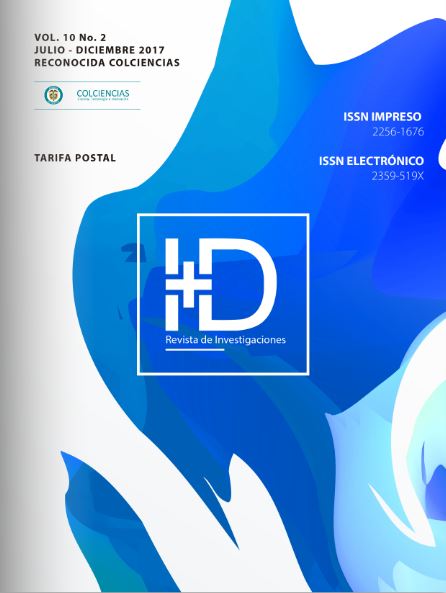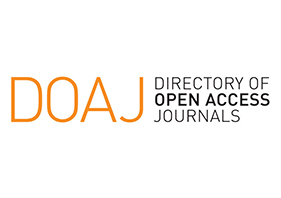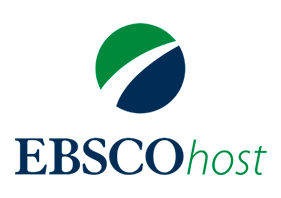Methodological proposal for the evaluation of the project portfolio case study “Oleaginosas promisoras”
DOI:
https://doi.org/10.33304/revinv.v10n2-2017003Keywords:
Project portfolio evaluation, Hierarqy analysis, Super decisions, R&D projects, Sistema general de regalías (SGR)Abstract
This paper proposes a methodology for evaluating the portfolio of projects of a program funded by the Fondo de Ciencia Tecnología e innovación, case study: “Investigación Técnico-Social de Oleaginosas Promisoras con miras a su Desarrollo Agroindustrial”. To this end, different methods of evaluating projects presented in the specialized literature, taking into account the specificities of the case study were studied. The Process of Hierarchical Analysis (AHP) was selected as the best option, giving a weighting to the criteria and sub-criteria proposed in the hierarchical structure and a scoring for the 15 sub-projects that make up the portfolio. For the mathematical development of the methodology proposed Super Decisions Software was used. The weights were calculated in Excel and the Survey Monkey tool for gathering the information is used. The three sub-criteria with more weight were respectively: human resources, technical feasibility and articulation of actors and the criteria were: feasibility, resources and benefits. Among the projects with the best final scores were social projects.Downloads
References
Aragonés, P. B., Chaparro-González, F., Pastor-Ferrando, J.-P., & Pla-Rubio, A. (2014).
An AHP (Analytic Hierarchy Process)/ANP (Analytic Network Process)-based multi-criteria decision approach for the selection of solar-thermal power plant investment projects. Energy, 66, 222–238. doi:10.1016/j.energy.2013.12.016
Archer, N. ., & Ghasemzadeh, F. (1999). An integrated framework for project portfolio selection. International Journal of Project Management, 17(4), 207–216. doi:10.1016/S0263-7863(98)00032-5
Chen, C.-T., & Cheng, H.-L. (2009). A comprehensive model for selecting information system project under fuzzy environment. International Journal of Project Management, 27(4), 389–399. doi:10.1016/j.ijproman.2008.04.001
de Loë, R. C., Melnychuk, N., Murray, D., & Plummer, R. (2016). Advancing the State of Policy Delphi Practice: A Systematic Review Evaluating Methodological Evolution, Innovation, and Opportunities. Technological Forecasting and Social Change, 104, 78–88. doi:10.1016/j.techfore.2015.12.009
Eilat, H., Golany, B., & Shtub, A. (2006). Constructing and evaluating balanced portfolios of R&D projects with interactions: A DEA based methodology. European Journal of Operational Research, 172(3), 1018–1039. doi:10.1016/j.ejor.2004.12.001
Forman, E., & Peniwati, K. (1998). Aggregating individual judgments and priorities with the analytic hierarchy process. European Journal of Operational Research, 108(1), 165–169. doi:10.1016/S0377-2217(97)00244-0
Ghapanchi, A. H., Tavana, M., Khakbaz, M. H., & Low, G. (2012). A methodology for selecting portfolios of projects with interactions and under uncertainty. International Journal of Project Management, 30(7), 791–803. doi:10.1016/j.ijproman.2012.01.012
Grošelj, P., Zadnik Stirn, L., Ayrilmis, N., & Kuzman, M. K. (2015). Comparison of some aggregation techniques using group analytic hierarchy process. Expert Systems with Applications, 42(4), 2198–2204. doi:10.1016/j.eswa.2014.09.060
Huang, C.-C., Chu, P.-Y., & Chiang, Y.-H. (2008). A fuzzy AHP application in government-sponsored R&D project selection.
Omega, 36(6), 1038–1052. doi:10.1016/j.omega.2006.05.003
Mateo, J. R. S. C. (2012). Multi Criteria Analysis in the Renewable Energy Industry. In Multi-Criteria Analysis in the Renewable Energy Industry, Green Energy and Technology (pp. 33–41). doi:10.1007/978-1-4471-2346-0
Miller, G. (1995). The magical number seven, plus or minus two: some limits on our capacity for processing information. Psychological Review, 101(2), 343–352. doi:10.1037/h0043158
Meade, L. M., & Presley, a. (2002). R&D project selection using the analytic network process. Engineering Management, IEEE Transactions on, 49(1), 59 –66. doi:10.1109/17.985748
Mulliner, E., Malys, N., & Maliene, V. (2015). Comparative analysis of MCDM methods for the assessment of sustainable housing affordability. Omega, 59, 146–156. doi:10.1016/j.omega.2015.05.013
Saaty, T. L. (2000). Fundamentals of decision making and priority theory with the Analytic Hierarchy Process .
Saaty, T. L. (2008). Decision making with the analytic hierarchy process. International Journal of Services Sciences, 1(1), 83. doi:10.1504/IJSSCI.2008.017590
Smith-Perera, A., García-Melón, M., Poveda-Bautista, R., & Pastor-Ferrando, J. P. (2010). A Project Strategic Index proposal for portfolio selection in electrical company based on the Analytic Network Process. Renewable and Sustainable Energy Reviews, 14(6), 1569–1579. doi:10.1016/j.rser.2010.01.022
Sokmen, N. (2014). A multi-criteria project assessment framework for R&D organizations in the IT sector. In PICMET 2014 - Portland International Center for Management of Engineering and Technology, Proceedings: Infrastructure and Service Integration (pp. 2455–2466). Institute of Electrical and Electronics Engineers Inc. Retrieved from http://www.scopus.com/inward/record.url?eid=2-s2.0-84910122044&partnerID=tZOtx3y1
Tavana, M., Khalili-Damghani, K., & Sadi-Nezhad, S. (2013). A fuzzy group data envelopment analysis model for high-technology project selection: A case study at NASA. Computers & Industrial Engineering, 66(1), 10–23. doi:10.1016/j.cie.2013.06.002
Vidal, L. A., Marle, F., & Bocquet, J. C. (2011). Using a Delphi process and the Analytic Hierarchy Process (AHP) to evaluate the complexity of projects. Expert Systems with Applications, 38(5), 5388–5405. doi:10.1016/j.eswa.2010.10.016
Wu, W., Chiang, C., & Lin, C. (2008). Comparing the aggregation methods in the analytic hierarchy process when uniform distribution. WSEAS Transactions on Business and Economics, 5, 82–87.
SurveyMonkey®. Copyright © 1999-2016. http://surveymonkey.com/
SuperDecisions Software. Versión 2.0 [Software de
computación].http://www.superdecisions.com/












